Constipation is one of the most common problems that people face, with between 2 and 28% of the population in Western countries reporting having this [1-3]. In 2007 in the United States, 19.4% of people reported problems with chronic constipation[4] and in Canada between 15% and 27% of people reported having sought health care support for chronic constipation in 2001 [5].
Defining Constipation
The term “constipation” means different things to different people. For some it simply means they don’t pass their stools (feces) often enough, and for others it means that when they do, their stools are hard, difficult to pass, may cause lower abdominal discomfort, or feel like they “still have to go” afterwards (incomplete evacuation).
What is considered a ‘normal range’ in the number of bowel movements per week varies considerably; from anywhere from 3 – 21 times per week, provided the stools are soft and easy to pass, but not loose or unformed.
For some people, having bowel movements 3 times per week may be normal, as long as their stools aren’t hard, dry or compact and there is no abdominal discomfort. For others, 3 times per day (21 times per week) may also be considered fine, provided the stools aren’t unusually loose. There are many factors that can contribute to chronic constipation; including some medications that people take, inadequate fiber or the wrong kind of fiber, insufficient hydration (not drinking enough water, especially when its hotter out, or exercising), high levels of estrogen and progesterone when a woman is pregnant, or disorders such as Irritable Bowel Syndrome (IBS) and diverticulosis.
The Causes of Chronic Constipation
People often think (or are told) that if they are constipated, they just need to eat more fiber, but in some cases increasing fiber from certain sources such as grains may make the problem worse. For example, some people are wheat sensitive, but not gluten-intolerant (i.e. not Celiac). That is, they are sensitive to wheat only, but not rye or barley (which also contain gluten). Others have something called non-celiac gluten sensitivity which resolves when gluten is eliminated from the diet, yet don’t test positive for Celiac disease. These people feel better when they avoid grain-based carbs, and may opt instead for eating nutritiously-dense starchy vegetables, such as winter squash or yam, for instance. Since a low-carb diet is non-grain-based, people who experience chronic constipation due to wheat intolerance or non-celiac gluten sensitivity will start to feel considerably better eating this way. The problem may be that for those with non-celiac gluten sensitivity, other sources of gluten, such as those found in malt vinegar or low carb beer may continue to cause them symptoms.
Many people who try a “low-carb” or “keto” diet on their own often complain of being constipated and this may be for a number of other reasons. They may be taking a medication that causes constipation as a side-effect, they may not don’t drink enough water, or it may be the result of something else.
Inadequate Hydration
I would estimate that ~80% of the people that I assess in my office have observable signs that they are aren’t drinking enough water, so this is something I would recommend most people to consider as a possible contributor to chronic constipation.
The idea that everybody needs to drink “8 glass of water per day” is a fallacy; everyone’s need for water is different. A good rule of thumb to know if you are dehydrated is just to look in the mirror. If your lips are dry and wrinkled, then you probably should aim to increase your water intake. When your lips are plump and without deep lines, you’ve probably had sufficient amount. Water is best, as coffee and tea act as a mild diuretic. They won’t dehydrate you, but you will pass the water contained in them more rapidly.
If you don’t really like plain water, a Sodastream® that enables you to make carbonated water at home may be the answer. My clients know that there is always a bottle of it on my desk, as that is how I make sure to drink enough water. A twist of lime or lemon makes a nice treat too!
What about Getting Enough Fiber?
In Canada, dietary recommendations for dietary fiber intake varies with age and gender. Men under the age of 50 years are recommended to take in 38 gm / day of dietary fiber, and men over 50 years to take in 30 gm / day. Women under 50 years old are recommended to take in 25 gm of fiber per day and over 50 years, 21 gm per day [6].
In the US, fiber intake recommendations from the Institute of Medicine range from 19 grams to 38 grams per day, depending on gender and age [7].
While people generally think of “healthy whole grains” as good sources of fiber, many are not. For example, medium grain brown rice only has 3.4 g of fiber per 100 g, whereas wild rice (which is actually a grass and not a grain) has 6.2 g of fiber per 100 g [8]. Many vegetables and fruit such as avocado and berries are excellent sources. More on that below.
Two Kinds of Fiber — soluble and insoluble
There are two kinds of fiber; insoluble and soluble.
Insoluble fiber is what most people think about when they think of ”roughage” needed to form stool and prevent constipation. It helps form the bulk of the stool. Insoluble fiber is naturally present in the outside of grains, such as whole grain wheat and the outside of oats and is also found in fruit, legumes (or pulses) such as dried beans, lentils, or peas, some vegetables, and in nuts and seeds. Many of these are eaten on a low carb diet and can provide the recommended amount of fiber (more on that below).
Soluble fiber forms a gel’ in the intestine and binds with fatty acids. It slows stomach emptying and helps to make people feel fuller for longer, as well as slow the rate that blood sugar rises, after eating. Soluble fiber absorbs water in the gut, and helps to form a pliable stool. Soluble fiber is found on the inside of certain grains, such as oats, chia seeds or psyillium, as well as the inside of certain kinds of fruit such as apple and pear.
For those eating a low carb diet, getting enough fiber is not that difficult. Here are a few examples of the fiber content of foods that can be eaten;
- Avocado — Surprisingly, avocado which is an excellent source of vegetable fat, is also high in fiber, having more than 10 gm fiber per cup (250 ml). Avocado grown in Florida which are the bright green, smooth-skinned variety have more insoluble fiber than California avocado, which are the smaller, darker green, dimpled variety.
- Berries — Berries such as blackberries and raspberries are an excellent source of antioxidants, but also have 8 gm fiber per cup (250 ml).
- Coconut — Fresh coconut meat has 6 gm of net carbs per 100 grams of coconut, but also packs a whopping 9 gms of fiber and is a very rich source of fat (33 gms per 100 gm coconut). It can be purchased peeled, grated and sold frozen in many ethnic stores or in the ethnic section of regular grocery stores.
- Artichoke — Artichoke is a low-carbohydrate vegetable that is delicious boiled and it’s leaves dipped in seasoned butter. Surprisingly, one medium artichoke has over 10 gm of fiber.
- Okra — Okra, or lady fingers’ is a staple vegetable in the South Asian diet and is commonly eaten in the Southern US. Just one cup of okra contains more than 8 gm of fiber.
- Brussels Sprouts — These low-carb cruciferous vegetables are not just for Thanksgiving and Christmas dinner. Split and grilled on the BBQ with garlic, they are a sweet, nutty addition to any meal, packing almost 8 gm of fiber per cup.
- Turnip — Turnip, the small white vegetable with a hint of purple is not to be confused with the pale beige, larger rutabaga. Turnip contains almost 10 gm of fiber per cup. It is delicious pickled with salt and one beet and is commonly eaten with Middle Eastern food.
Irritable Bowel Syndrome (IBS) and Diverticulosis
Unfortunately, in addition to the fact that 20-30% of people in the US and Canada experience chronic constipation, approximately 10-15% of the population have Irritable Bowel Syndrome (IBS) [9].
IBS is a functional disorder of the gastrointestinal (GI) tract — which means there is no structural or biological abnormality that can be measured on routine diagnostic tests. These people often experience chronic constipation, sometimes alternating with bouts of diarrhea, as often experience abdominal pain and bloating, as well. You can read more about IBS here. As mentioned in the linked article, many people with IBS feel considerably better when they adopt a low-carb diet because they are no longer eating many of the foods that underlie their symptoms such as grains, milk and fruit, other than berries. Unfortunately, even after adopting a low carb diet about 15- 20% of those diagnosed with IBS still have residual symptoms. I have years of experiencing working with those with IBS and offer an IBS package as well as a low FODMAP package that can help.
Another common problem is diverticulosis, which an estimated 50% of those over 50 years of age have. Diverticulosis is where your colon (large intestine) has small ”pockets” in it called diverticula, which can cause a number of symptoms including chronic constipation. Like those with IBS, many people with diverticulosis feel much better when they adopt a low-carb diet because they are no longer eating foods such as wheat, dairy products with lactose or high fructose fruit that used to contribute to their symptoms. The problem is that many of the low carb vegetables that are low in carbs and may be rich in fiber also may be contributing to their symptoms. So many of my clients have recently been diagnosed with diverticulosis, that I have recently added a one-hour teaching session that can be added to the end of a package, or taken as a stand-alone session to help.
Final Thoughts
In trouble-shooting constipation, I recommend that people ensure they are adequately hydrated, and that they remember to drink extra water when it’s hot out or when they’ve been ill.
Eating wide variety of low-carb veggies, including those listed above that are known to be high in fiber is also good. For those on a moderate low-carb diet (not a ketogenic diet), small amounts of yam or winter squash are other ways to get added nutrients and fiber.
Berries are a wonderful source of nutrients and anti-oxidants, can be enjoyed by those on a low-carb diet and are a wonderful source of fiber! Strawberries have 3g of fiber per cup and blackberries and raspberries have a whopping 8 g of fiber per cup, with blueberries paling in comparison with a mere 2.4 g of fiber (and are higher in carbs, too).
Of course, exercise as simple as a daily walk can often help people move their bowels and many people swear by their morning cup of coffee!
For those doing all of the things above and still experiencing chronic constipation, it may be time to rule out other possible causes such as Celiac disease, or non-celiac gluten sensitivity, IBS, or diverticulosis.
I can help.
More Info?
If you would like more information, you can learn about me and the Comprehensive Dietary Package that I offer.
To your good health!
Joy
You can follow me on:
Twitter: https://twitter.com/jyerdile
Facebook: https://www.facebook.com/BetterByDesignNutrition/
Copyright ©2019 BetterByDesign Nutrition Ltd.
LEGAL NOTICE: The contents of this blog, including text, images and cited statistics as well as all other material contained here (the ”content”) are for information purposes only. The content is not intended to be a substitute for professional advice, medical diagnosis and/or treatment and is not suitable for self-administration without the knowledge of your physician and regular monitoring by your physician. Do not disregard medical advice and always consult your physician with any questions you may have regarding a medical condition or before implementing anything you have read or heard in our content.
References
- Higgins PDR, Johanson JF, Epidemiology of constipation in North America: a systematic review, The American Journal of Gastroenterology 99(4); 750—759, 2004.
- Corazziari E, Definition and epidemiology of functional gastrointestinal disorders, Best Practice and Research: Clinical Gastroenterology, 18 (4); 613—631, 2004.
- Harris LA, Prevalence and ramifications of chronic constipation, Managed Care Interface, 18 (8); 23—30, 2005.
- Johanson JF, Kralstein J, Chronic constipation: a survey of the patient perspective, Alimentary Pharmacology and Therapeutics, 25(5); 599—608, 2007.
- Pare P, Ferrazzi S, Thompson WG et al, An epidemiological survey of constipation in Canada: definitions, rates, demographics, and predictors of health care seeking, The American Journal of Gastroenterology, 96(11); 3130—3137, 2001.
- Health Canada, Fiber, https://www.canada.ca/en/health-canada/ services/ nutrients/fibre.html
- Institute of Medicine, Food and Nutrition Board. Dietary Reference Intakes: Energy, Carbohydrates, Fiber, Fat, Fatty Acids, Cholesterol, Protein and Amino Acids. Washington, DC: National Academies Press; 2005
- Source: US Department of Agriculture, Agricultural Research Service. 2014. USDA National Nutrient Database for Standard Reference, Release 27. Nutrient Data Laboratory Home Page, http://www.ars.usda.gov/ba/bhnrc/ndl.
- Foundation for Gastrointestinal Disorders (IFFGD), https://www.aboutibs.org/facts-about-ibs/statistics.html
Joy is a Registered Dietitian Nutritionist and owner of BetterByDesign Nutrition Ltd. She has a postgraduate degree in Human Nutrition, is a published mental health nutrition researcher, and has been supporting clients’ needs since 2008. Joy is licensed in BC, Alberta, and Ontario, and her areas of expertise range from routine health, chronic disease management, and digestive health to therapeutic diets. Joy is passionate about helping people feel better and believes that Nutrition is BetterByDesign©.
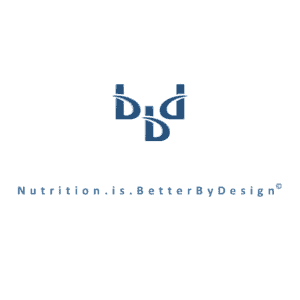





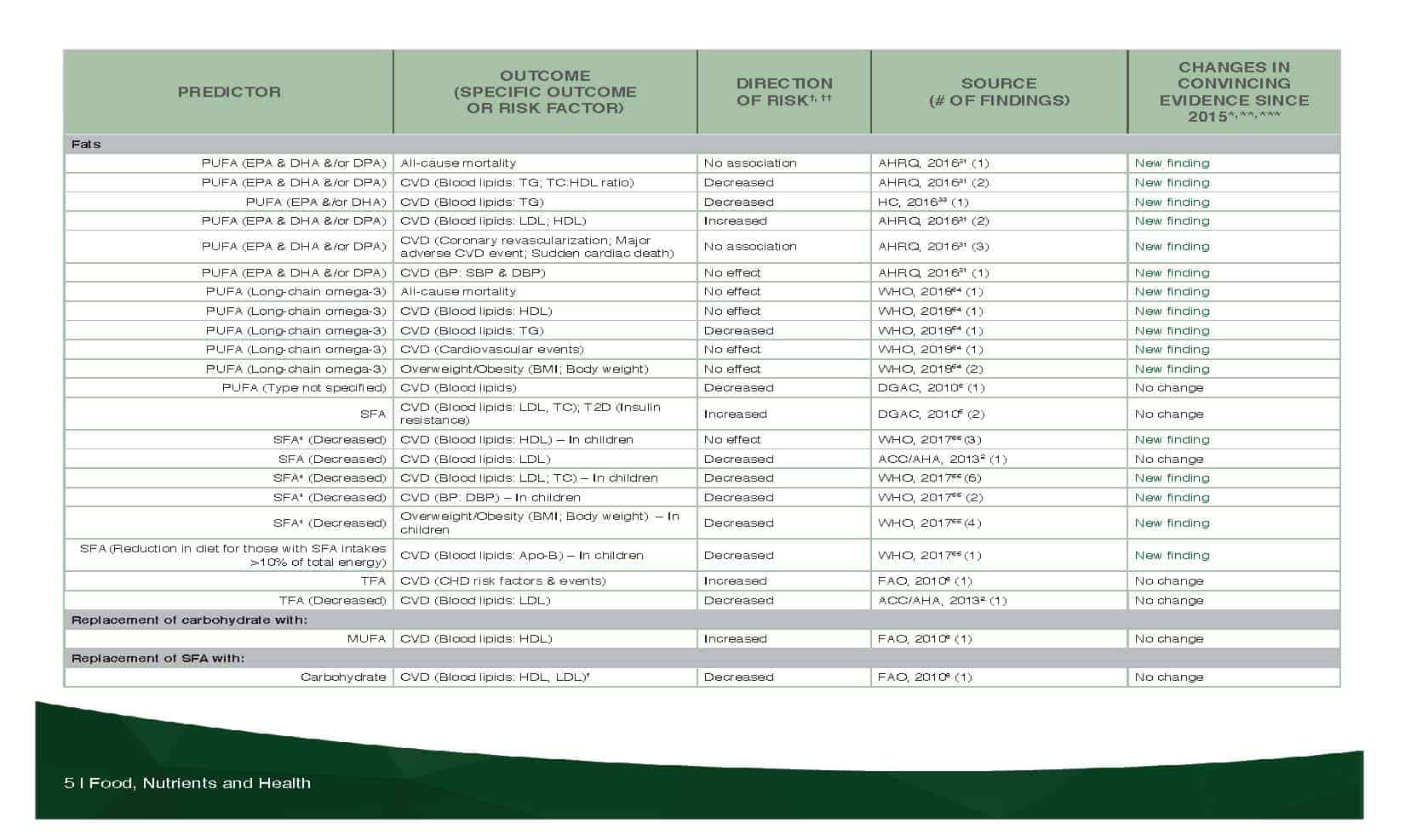
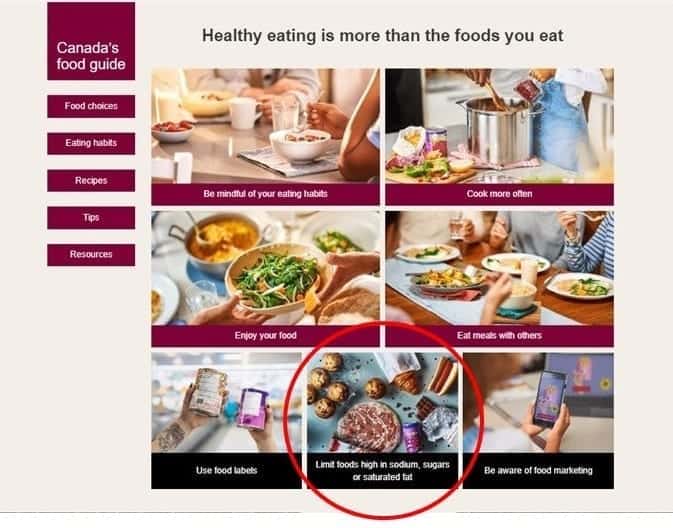
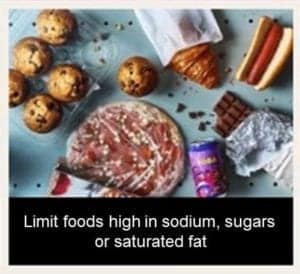 In fact, when the image of these processed foods
In fact, when the image of these processed foods 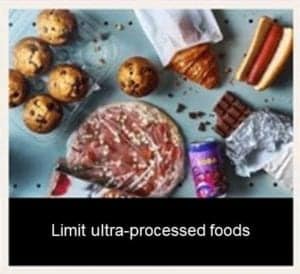 In my opinion, it makes good sense for Health Canada to show a photo of ultra-processed foods as they had (above)with advice to limit them — but because they are ultra processed, not because they are high in saturated fat or sodium.
In my opinion, it makes good sense for Health Canada to show a photo of ultra-processed foods as they had (above)with advice to limit them — but because they are ultra processed, not because they are high in saturated fat or sodium. After eating, the higher levels of blood glucose
After eating, the higher levels of blood glucose